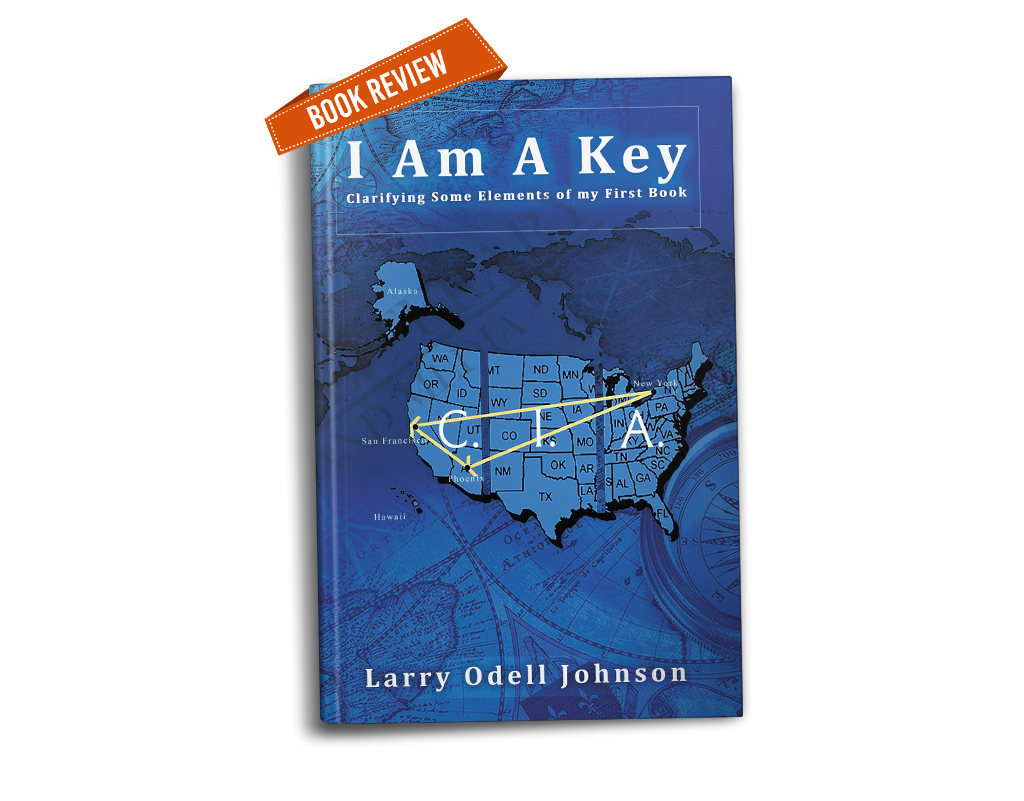
HEAR FROM THE BOOK EXPERTS

In partnership with Bookside Press

I Am a Key
Larry Odell Johnson
Reviewed by: Michael Radon, Pacific Book Review
“Moreover, once an anagram is completed, the anagram will possess its own truth… whether or not one agrees with it.”
Many people are familiar with the term “read between the lines,” but why doesn’t it also include the spoken word? Following up on the anagram coding detailed in Johnson’s The Mind Factory, this supplemental material provides hundreds of further examples and more of the theory behind dissecting a person’s writing and speech to uncover the potential hidden meanings lying under the surface. Using a background in sociology, mathematics, and basic cryptography, the author interprets each word or phrase as an anagram, where individual letters can be symbolic representations of full words that can reveal a celebrity’s intentions through their name or an obscured purpose of a government agency through their official abbreviation. Outlining more of a method than an actual rigid code, the book enables readers to start dissecting text and speech in their own lives in a similar fashion.
In this additional work, the author goes back to describe some of what the first book set out to do and where some more explanation may have been needed. From there, he reiterates his points and the relative ease with which a person can utilize this method with either the given interpretations or how to integrate their own. A sample alphabet of examples is helpfully provided, as well as nearly three hundred examples that reference the first book, allowing the reader to either re-read that title with more understanding or follow along page by page and expand their understanding by breaking down the decoded messages one after another. A simple concept with unlimited potential, this system allows followers to be able to find a number of unexpected meanings in words that might otherwise seem innocuous.
Meant primarily as an expansion of the first book, this work gives readers only a taste of the original subject matter; a full understanding of the methodology and intention presented here can only be found in the first title. Though he didn’t wish to replace or correct what was printed in that title, the author wanted to go back and make things less ambiguous and clear up some misunderstandings. He has used this book as a means to go into more detail without bogging down the original book with a second edition containing an overwhelming amount of information. Though some explanation is provided for the original premise, contained here is mainly an example key, as well as an explanation of the process of creating an anagram and then inferring its potential interpretations.
Readers expecting a by-the-numbers way of interpreting any word or phrase into a rigid re-translation will see examples of how to make their own. However, the author states that this system requires a degree of flexibility to make sense of every potential combination of letters one might come across. The audience is given not only a skill they can use at their own discretion but even a simple mental exercise of rearranging letters daily and ascribing additional purpose to word choices used. Though this book’s potential is largely dependent on readers being familiar with the author’s previous work, there is still enough information presented here to extrapolate and make sense of the general concept and begin putting it into practice. In short, the author has penned an excellent companion work that will not only prove useful to readers of his previous book but also to those new to his writing as well.

